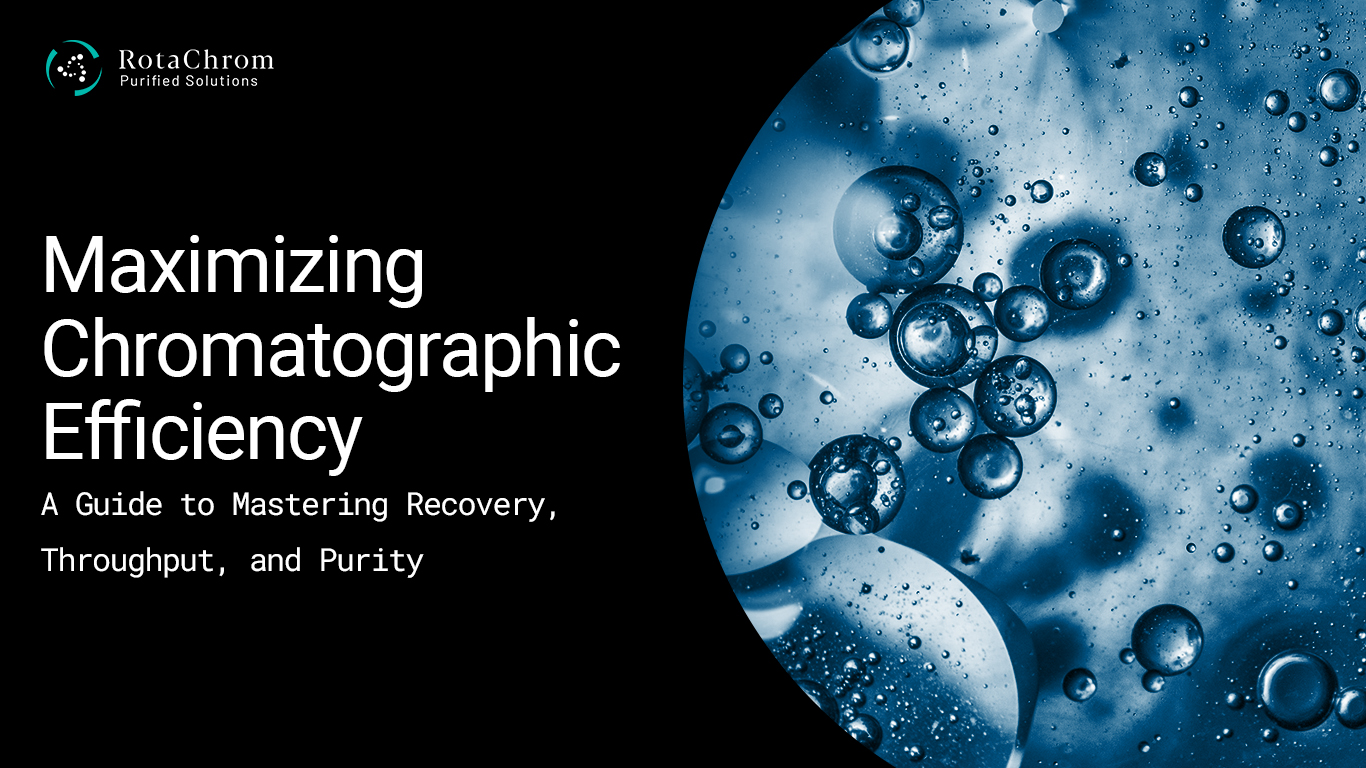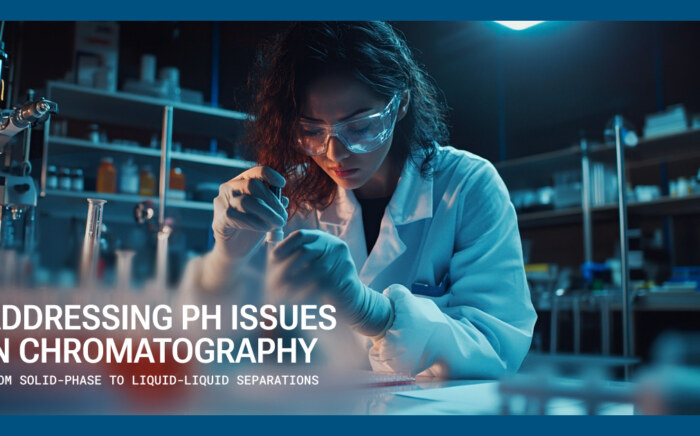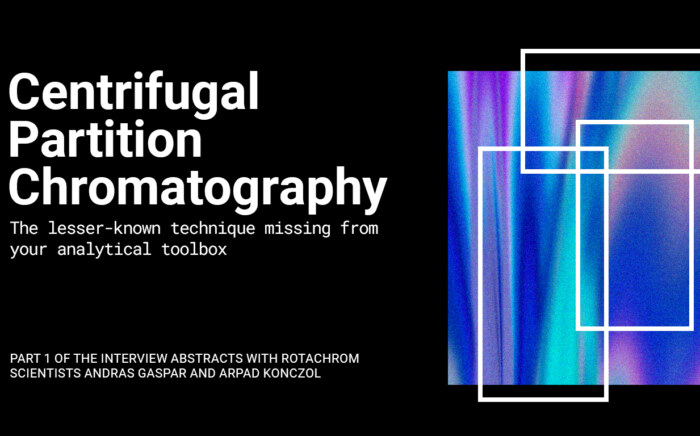Increasing separation efficiency by pH adjustment in Centrifugal Partition Chromatography
NewsSeparating and purifying individual components of a mixture is a primary application of chromatographic techniques. However, achieving pure compounds is not always a straightforward process. Chromatographers must balance throughput, recovery, and purity, prioritizing the most important factor for a given purification task. In this article, we’ll examine the “chromatographer’s triangle” and explore the key factors to consider for successful purification.
Chromatography is commonly categorized into two scales: analytical and preparative. The former is used to analyze the composition of a mixture, while the latter is used to purify components of the mixture on a larger scale. In this article, we’ll focus on these two scales and explore their distinct characteristics in chromatography separation techniques.
Scales of Chromatography Separation: Analytical and Preparative
Analytical chromatographic methods are used to obtain qualitative and quantitative information about a sample. These methods typically involve small sample sizes of 1-10 mg and operate at a flow rate of 0.5-2 mL/min. Examples of analytical chromatographic techniques include high performance liquid chromatography (HPLC).
Preparative chromatographic methods, on the other hand, are used to isolate a specific component of a mixture (called the compound of interest, or CoI) or to remove impurities from the mixture. These methods are capable of processing much larger amounts of material, often in the range of hundreds or thousands of grams and operate at higher flow rates in the range of liters per minute.
Preparative chromatographic systems are typically operated under overloaded conditions, meaning that the injected amount of sample is greater than what can reach equilibrium between the stationary and mobile phase. As a result, the peaks produced by preparative chromatography may be broad and distorted, in contrast to the narrow, symmetrical peaks produced under analytical conditions.
In preparative chromatography, the aim is to isolate the compound of interest (CoI) in the maximum quantity and at the highest purity, in the shortest possible time. However, achieving all three goals can be challenging as they are often interdependent.
For instance, increasing the CoI yield, or the amount of the CoI isolated, can lead to lower purity because of impurities that may also be separated along with it. Conversely, increasing the CoI purity may cause lower yield as some of the CoI may be lost during the impurity removal process.
Higher throughput, or the ability to process more material in less time, may also result in lower yield and purity. This is due to the use of more aggressive conditions, such as higher flow rates and stronger eluents, which could lead to the inclusion of impurities or loss of some of the CoI.
Mastering the Balance of Recovery, Throughput and Purity
Achieving an efficient and effective chromatography separation process requires a careful balance of the three parameters of yield, purity, and throughput. The specific trade-offs made depend on the specific goals and limitations of the separation process.
It’s worth noting that the performance of a chromatographic system is ultimately measured by its resolving power, or resolution, which reflects its ability to separate different components of a mixture. This parameter depends on both the selectivity and efficiency of the system, with selectivity referring to its ability to distinguish between different components, and efficiency referring to the degree of peak broadening during separation.
In practice, both analytical and preparative scale separations are often used in conjunction with each other. A purification method usually begins with small-scale analytical separations, which are then scaled up to the preparative level. Additionally, fractions collected during a preparative separation are usually analyzed using analytical techniques to confirm the identity and purity of the isolated compounds.
It’s worth mentioning that analytical and preparative scale separations are not mutually exclusive, but rather complementary and frequently used in conjunction with each other throughout the purification process. Initially, method development begins with small-scale analytical separations to assess the effectiveness of different separation conditions. Later on, preparative scale separations are employed to isolate greater amounts of the desired compound. Furthermore, analytical techniques are often used to verify the purity and identity of the separated compounds by analyzing the fractions collected during preparative separations.
Centrifugal Partition Chromatography Separation
Centrifugal partition chromatography (CPC) is a unique type of chromatography that offers a promising solution to the challenges posed by chromatography separation issues. By providing a highly versatile solvent system, CPC allows for the purification of a wide range of compounds with great flexibility. This liquid-liquid chromatography technique has gained popularity in recent years due to its simplicity, efficiency, and cost-effectiveness.
One of the key advantages of CPC is its use of a liquid stationary phase, which is immobilized by a strong centrifugal force. This eliminates the need for traditional chromatographic columns or solid stationary phases, such as silica gel, which can be expensive and challenging to work with. The stationary phase is typically packed into a series of interconnected cells attached to a large rotor. The mixture to be separated is introduced onto the top of the cells, and the mobile phase is passed through the cells in the form of tiny droplets. The compounds in the mixture are separated based on their affinity for the stationary phase.
CPC is a versatile technique that can be used to separate a wide range of compounds, including small molecules, proteins, and other biological compounds. It is particularly well-suited for the purification of compounds on a preparative scale, due to its high yield, throughput, and productivity.
In addition to its simplicity and efficiency, CPC has several other benefits, including low sample loss, high output capacity, and the ability to reuse the cells after a rinse. This makes it a cost-effective and environmentally friendly alternative to traditional chromatographic techniques.
Overall, CPC is a powerful and versatile technique for the separation and purification of compounds. Its simplicity, efficiency, and cost-effectiveness make it a valuable tool in a variety of fields, offering an alternative to traditional chromatography methods.
Resources
To learn more about CPC and chromatography in general, click any of the links below.



